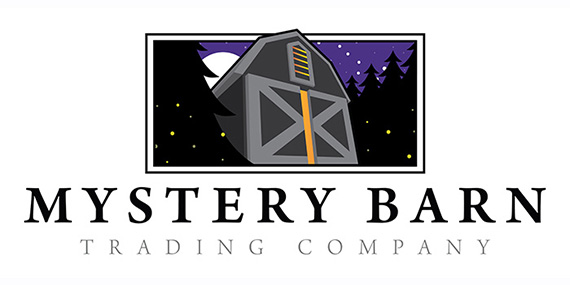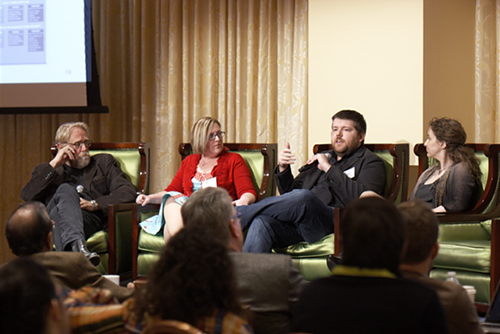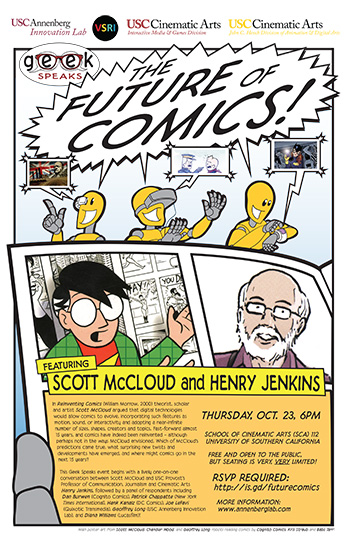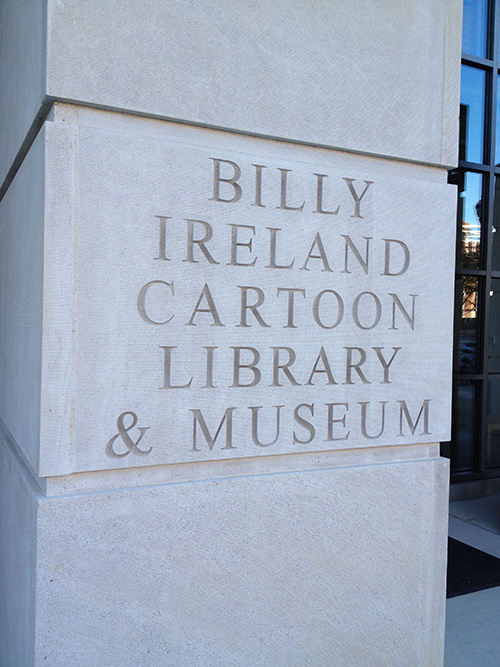|
|
A thought experiment.
While I was talking with my Dad this morning, we were discussing the current oligarchical state of the United States compared to the Gilded Age of Rockefeller and Carnegie. Trickle-down Reaganomics has never worked because it goes contrary to human nature (greed); FDR’s Revenue Act of 1935 and its Wealth Tax taxed the robber barons up to 75%, and of course they quickly found loopholes for tax evasion, necessitating the Revenue Act of 1937 – but what revenues WERE gleaned from that era largely established the American middle class. Reagan’s untethering of the rich from their tax obligations began the long choking-out of said middle class. Trump returned to power on the back of a global dissatisfaction with the Establishment, itself the result of a generation-long evisceration of the middle class, but anyone thinking that Trump is going to actually make life better for anyone other than his fellow kleptocrats is a fool.
This got me thinking. Democrats and liberals have waged a long-running campaign against the oligarchy, but this runs directly counter to the American Dream, in which anyone can become the next Trump or Kardashian, so God help any attempt to return to FDR’s tax plans because that could be THEIR money that’s being heavily taxed someday!
(Brace yourself – here comes the counterintuitive, provocative bit.)
What if Democrats took back the American Dream with its own Trumpian spin? What if we accepted the reality that the only way to affect 21st century change is ungodly amounts of money, with which one can buy Supreme Court justices and politicians? What if we taught people that the only moral, ethical response to a corrupt 1% is to get *even richer* and outspend the bastards? What if what we need is an anti-Ayn Rand, telling stories with a heroic, civic-minded John Galt instead of a selfish one, who demonstrates that it’s entirely possible to live like a king, affect massive social and environmental positive change, and sufficiently compensate their employees to reinstate and reinvigorate the American middle class?
The liberal Democrat mythical hero discovers the secret of cheap power and gives it away for free, but what if that genius instead got really stinking rich and used it to run the equivalent of Elon Musk out of business? (Isn’t that who we thought Elon Musk WAS before his descent into Trumpism?)
Does American pop culture actually need a modern American mythology built not around the violence of Iron Man or Batman but around the entrepreneurialism and philanthropy of Tony Stark and Bruce Wayne if they hadn’t generated their fortunes through war profiteering or inheritance? Do we need a reality show built around what members of society there are who embody this ideal, instead of Musk and the Kardashians? How do the Democrats out-Trump Trump by creating modern American heroes who live a financially rich life while enriching others and improving their communities, creating role models that own and accept the greed inherent to human nature AND showcase how if you use that wealth for the betterment of all then you become a respected pillar of the community instead of a Brian Thompson?
Scott Snyder’s ABSOLUTE BATMAN, set in an alternate reality where Bruce Wayne isn’t rich and uses much more brutal force to fight against the corrupt rich and powerful, is the antithesis of what I’m proposing here. ABSOLUTE BATMAN embodies more of the fantasy of the oppressed, and is shaping up to be more of a Robin Hood-type story than a Batman story, which is a really interesting take – but it was also the #1 selling comic of 2024, which shows that it struck a nerve in the zeitgeist, and if we use that as a barometer (and, of course, the aforementioned fate of Brian Thompson), then American culture is on the threshold of some really dangerous shit. Violent revolution is one option (a la STAR WARS), sure, but it’s not a GOOD option.
Mightn’t rejiggering the liberal Democrat message into making getting rich a moral and ethical imperative so you can do more good with that money provide a better alternative? And how do we short-circuit the “there are no good billionaires” counterargument by establishing and publicizing paths to wealth that do not require the fucking-over of others?

“Graffiti grows out of a desire to communicate and connect with the broadest possible audience in a direct and unmediated way; it is comparable to self-publishing, bypassing commercial networks and going directly to the audience.” Tsai, Eugenie. Kaws: What Party, p. 73.
The author continues:
“By putting his tag out on the streets, [Donnelly] was calling attention to his alter ego KAWS. Tagging private and publicly owned property in urban environments or settings is a way of claiming those spaces. Writing during the early days of graffiti in New York, Norman Mailer distilled the essence of the genre as getting the word out about yourself: ‘For now your name is over their name, over the subway manufacturer, the Transit Authority, the city administration. Your presence is on their presence, your alias hangs over their scene.’ Despite its disregard for the sanctity of property ownership, a concept at the heart of capitalism, graffiti’s goal of branding and promoting the writer aligns completely with other core values of capitalism and corporate America. KAWS’s early engagement with capitalism and consumer culture plays out further in his subsequent work.
“Making unsanctioned art in public areas of the city gave KAWS a creative start outside the formal art world. The streets and the city were his workspace. And it is this willingness to subvert the rules and challenge the status quo that has continued to shape his career even as he incorporated a more traditional studio-based art practice. In comparison to an artist like Jean-Michel Basquiat, who began his career in the late 1970s as a graffiti writer but decamped to a studio in the early 1980s to produce paintings for his gallery to sell, KAWS’s practice continued to evolve independent from the ecology of the art world. KAWS maintains a studio practice and produces toys and products that are sold via hs website as well as temporary outdoor spectacles.”

It’s been almost a decade since I did much blogging on this site. During that time the Internet changed significantly, with individual blogging the victim of an extensive coordinated assassination attempt by big social media companies like Facebook and Twitter. Yes, I still refuse to call Twitter X, because that’s just a ridiculously stupid non-brand, and is representative of the once-valuable Twitter being destroyed and stripped for parts. Twitter and Instagram were once really useful complements to individual blogs, and part of an ecosystem where each component was effectively a different critter that each had its role to play, and they all added up to something greater than the sum of its parts. Then Facebook and Twitter (and Instagram, and YouTube, and Pinterest, and LinkedIn, etc. etc.) became where people went to read updates across a whole swath of the people they cared about instead of reading a blogroll. When Google tried to kill RSS (which they kind of succeeded in doing, and also kind of didn’t) Facebook and Twitter were just so much easier to find everyone at once, so most of us bloggers wound up abandoning our blogs to post exclusively on Facebook or Twitter or whatever. That’s what I did. From a sheer user-based UX perspective, it made sense. That was kinda sad, but for the most part it was also kinda fine until those platforms grew super aggressive with their algorithms, preventing people from seeing everything from those people we deliberately chose to follow and instead serving up an endless stream of ads, suggested additional promoted profiles, and a flood of bots, and worst of all, explicitly manipulated what people saw to engineer outrage to juice engagement. The Trump era can in no small part be blamed directly on the bad actions of massive social media companies.
It should go without saying, but this is not what my generation had in mind for the Internet back in the 1990s.
Some of us (hi, Ernie!) launched Substack newsletters, Medium pages, Patreons, and other such things, which I may do sometime in the future. But for now, what I want and need is a way to learn in public, to keep a journal and research notebook (a la Warren Ellis) that isn’t owned and monetized by some huge-ass corporation, and to reconnect with my friends from all over.
Things are going to be janky on here for a while. Not only has the Internet changed since 2015, I’ve changed quite a bit too. My daughter Zoe is six months away from being an honest-to-God teenager, and I’ve become an honest-to-God graybeard. (So far the gray is contained to my beard and hasn’t spread to the ponytail yet, but that’s just a matter of time…) I finished my PhD in USC’s Media Arts + Practice program in 2018, then joined Whittier College as a visiting assistant professor while consulting for clients like Walt Disney Imagineering, where I did some work on Star Wars: Galactic Starcruiser (aka “the Star Wars hotel”). When COVID-19 hit my family and I finally abandoned Los Angeles and moved back to Ohio to be closer to our extended families. In 2021 my wife Laura and I both joined her alma mater Miami University, her in the student advising office and myself as an Assistant Professor in Miami’s Emerging Technology in Business and Design (ETBD) department in its College of Creative Arts. I’m now the Director of ETBD’s Games and Simulation program, which brings with it a ton of overhead, so my own research and studio practice have taken a back seat somewhat – but I did soft-launch something I’m calling the Worldbuilding and Narrative Design Research Laboratory (WNDRLab). WNDRLab is primarily a virtual lab and working group more than an actual physical space, a banner under which to showcase my students’ worlds and my research into things like XR with the Apple Vision Pro as a continuation of the thinking I started doing back on the HoloLens team at Microsoft. We also bought an old (1871!) farmhouse in 2023, and are still in the never-ending process of fixing it up, patching up its jerryrigged ancient-ass HVAC systems and other quirks, and so on. All of this is a long way of saying, I’ve got tons of things competing for my time, so there are likely to be bugs and broken links and pages that don’t look right. The 2015 me would gnash my teeth and rend my garments over such things, but the 2025 me has accepted that there are other, more important things to worry about, and there always will be. (See my previous note about Zoe being on the cusp of teenagerhood.) So please forgive any such glitches; it’s not that I don’t care, it’s just that there is always triage going on.
BUT, I miss this. I miss the days when we were a bunch of blogging punks that would get together at SXSW. I miss geeking out on stuff I’m exploring in public. I miss the opportunities and the social connections my blogging days led to. I’m not turning the comments on here because that was a bot-loaded shitshow even back then, and I shudder to think what that would do now – but please do feel free to reach out and say hi if you feel so inclined. There’s so much in the world right now that I’m interested in (XR, the future of games, the future of art), and I want to share what I’m learning, and geek out about it with other likeminded folks. If you’re reading this, hopefully that’s you – so please do say hi! As Aaron Manke always says at the end of an episode of Lore, “I love it when people say hi.”
Happy new year, and welcome back!

September 27, 2015
11:05 am
Yesterday I took a breather from the nonstop rollercoaster I’ve been on since the semester began. I’ve been planning the Annenberg Innovation Lab’s Think & Do event on The New Creators + Makers, which is going up in Chattanooga, Tennessee on Wednesday and Thursday next week; planning my trip to New York City immediately afterward for the 2015 Future of Storytelling summit; multiple consulting projects for lab partners; and, of course, my coursework for the Ph.D. in Media Arts and Practices that I’ve started over at USC’s School of Cinematic Arts – which includes a big transmedia theory + practice project that I’m sketching out for my eventual thesis. Much more to say on all of these, of course, but the topic of this post is what I did on my “day off”. It’s been a nonstop rush for weeks, and I needed a break.
So I opened an Etsy store. You know, like you do.
To be more specific, my wife Laura and I opened an Etsy store, The Mystery Barn Trading Company. The idea of Mystery Barn has been kicking around in my head for a while: back in November of 2013, I wrote the following little scenario:
Out in the middle of the woods, there sits an old barn. It is a beautiful thing, but also an odd thing. Instead of red with white trim, as most barns want to be, this barn is black. Its knotted boards are weathered and worn and easily over a century old, but they are still as coldly black as night itself. Which is, perhaps, doubly odd, because night is when the barn comes alive.
If you were to foolishly wander into those woods late at night, you might catch a glint of light from somewhere deep in the trees. If you followed it, you might find the barn, its doors tightly locked and its windows clouded over by the passage of time but still glowing with weird light from within. There might be strange music. You might hear laughter. You might even make out the whirring and clanking and banging of strange tools and devices and contraptions, clattering away at all improper hours.
If your timing is perfect, and your fortunes are just right (or, perhaps, just wrong), the door might crack open, and you might be invited inside.
Mystery Barn is kind of an offshoot of The Dreamsbay Company (my consulting practice). Whereas Dreamsbay was inspired by IDEO and Disney and big creative industry companies, Mystery Barn was inspired by smaller pop-up shops and indie artists. It brings a little more Ohio and Bainbridge Island to our lives in Los Angeles, serves as a prototype for the kind of studio Laura and I want to stand up someday, and lets us start selling our own creative works.
Laura and I had been planning to launch something where Laura could sell her paintings online, and given our love for Halloween, we thought we’d kick things off with a series of small, 6×6 paintings of little ghosts doing fun stuff, with a few other seasonal images thrown in for good measure. Laura developed a method where she takes pages salvaged from a book, sticks them to a wood board, and then uses that as the base “canvas” for a painting. I did the original pencil designs for the ghost characters and most of this original debut collection, which Laura then adapted into the paintings.
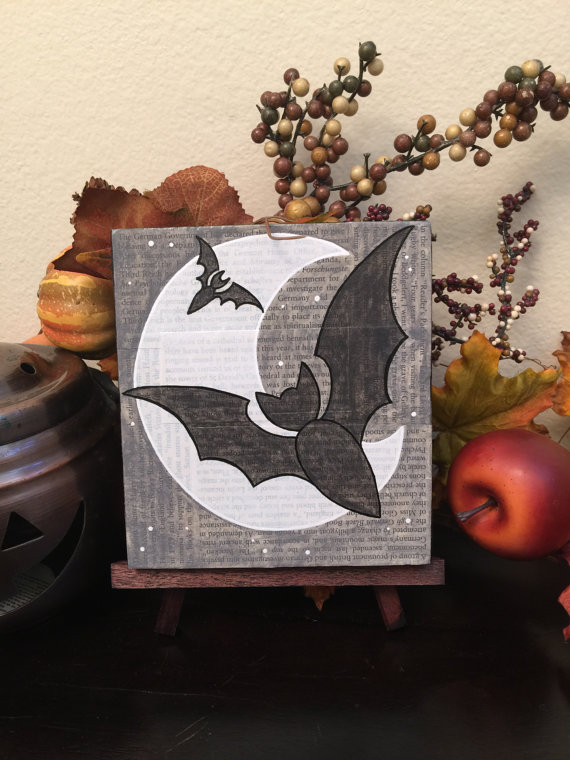
Crescent Moon and Bats
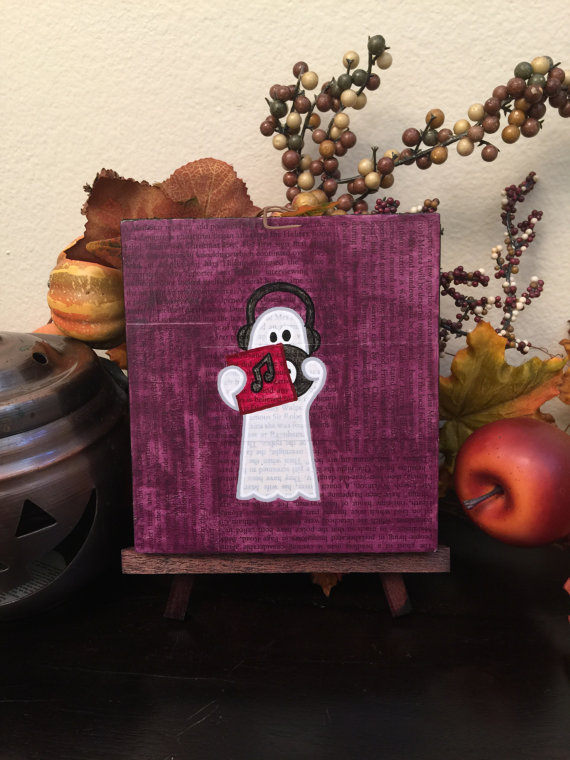
Ghost Listening to Records
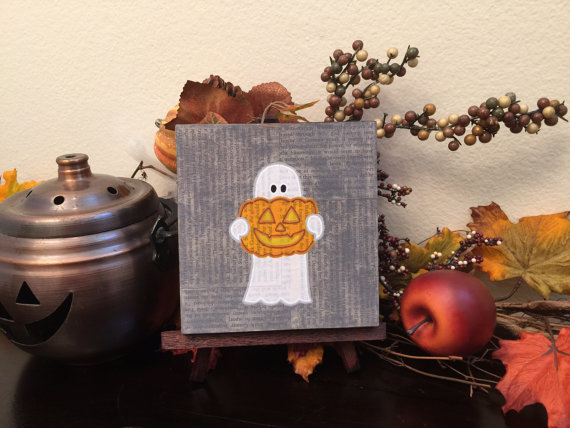
Ghost with Pumpkin
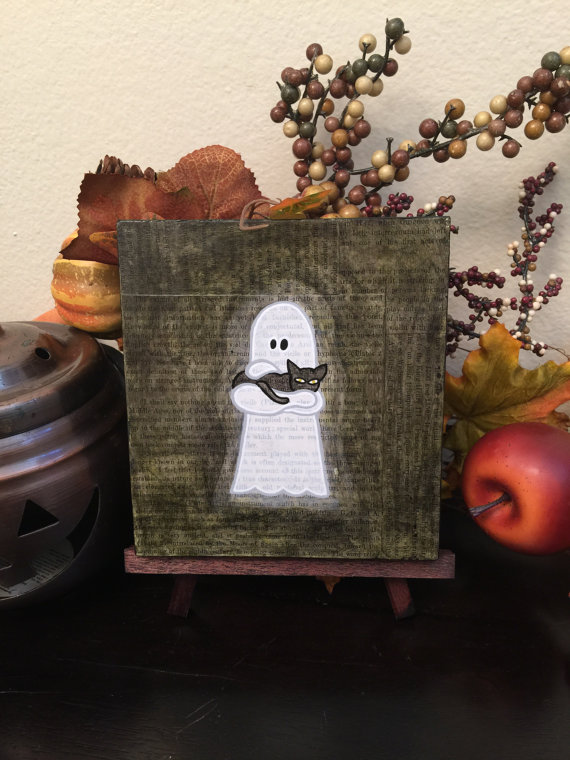
Ghost Holding Cat
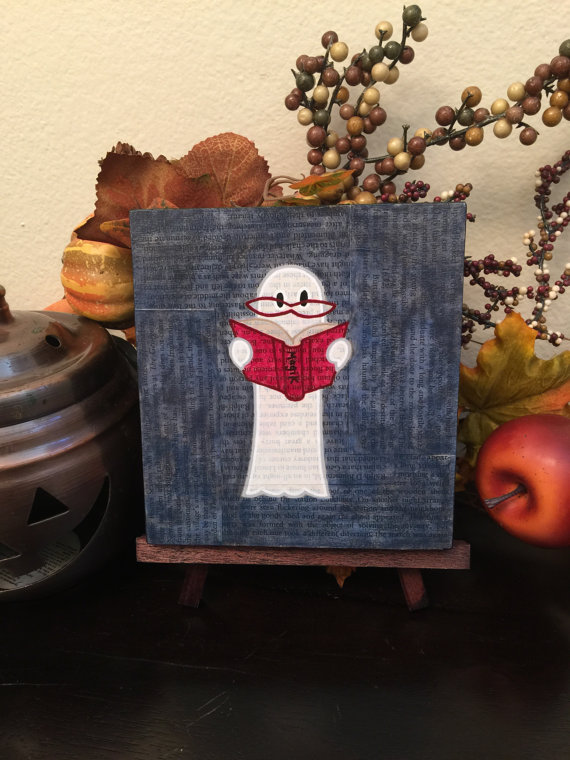
Ghost Reading a Book
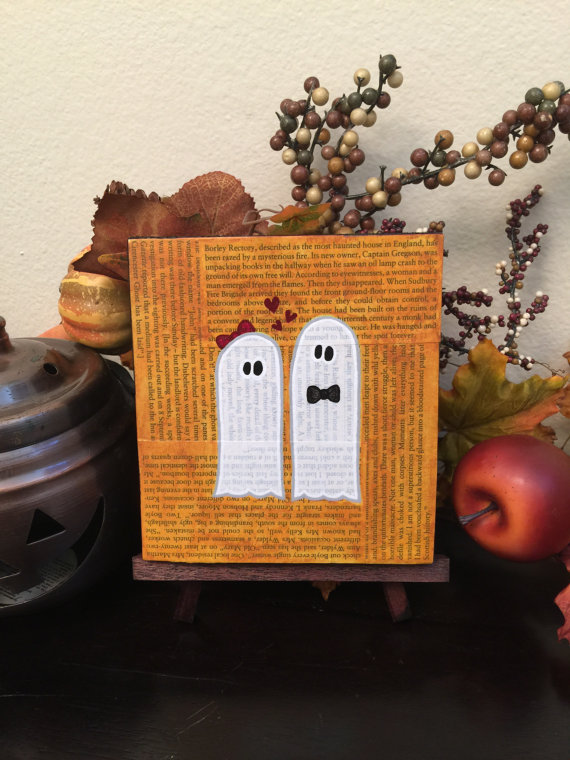
Ghosts in Love
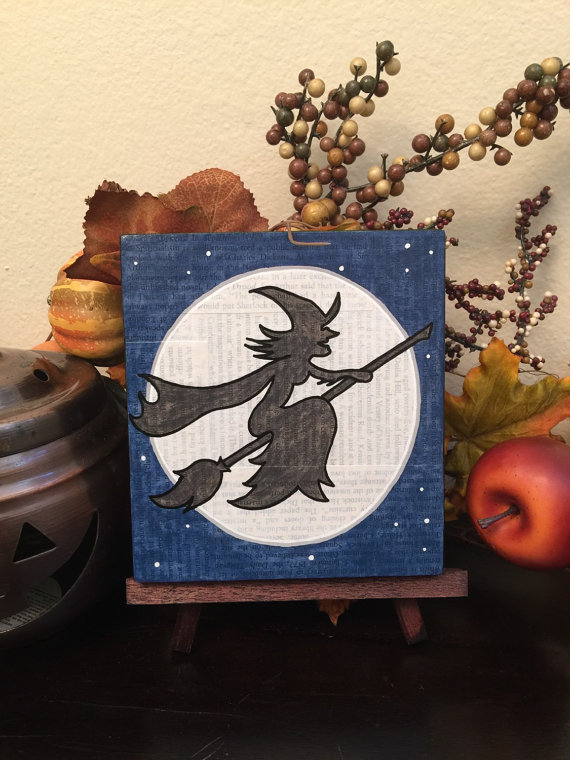
Full Moon and a Witch on a Broom
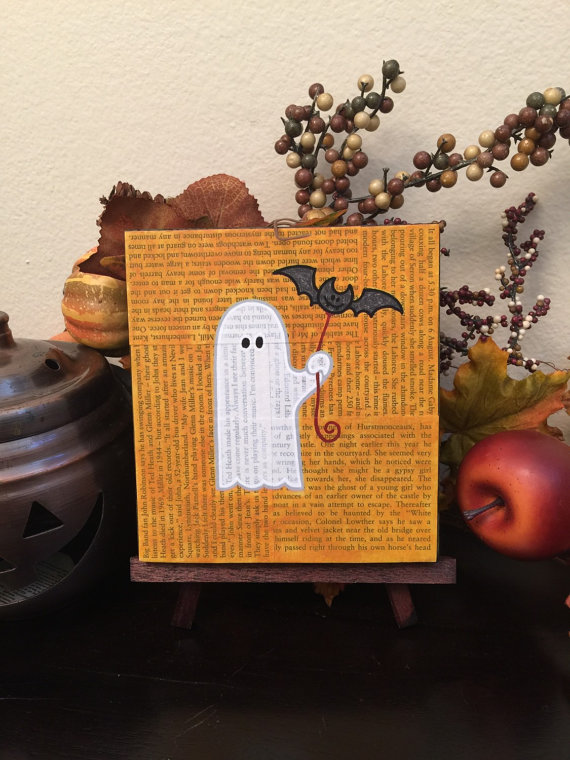
A Ghost and Its Bat
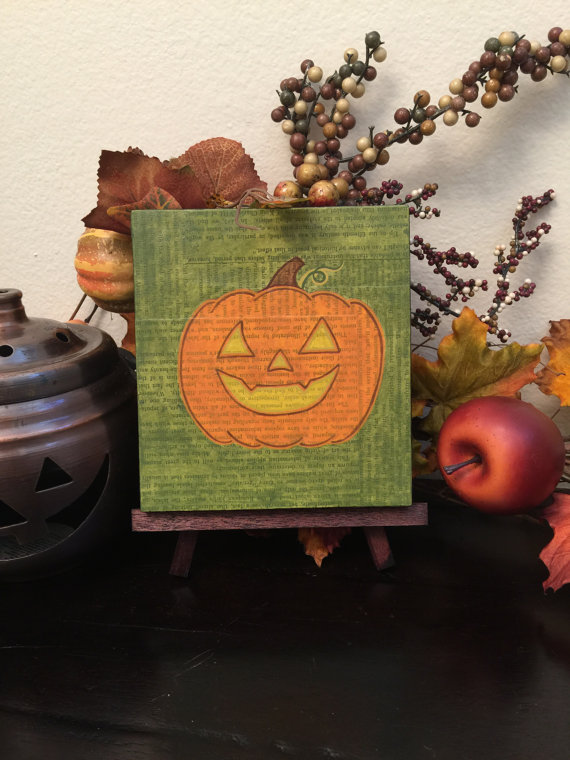
Pumpkin
There’s more where this came from, which we’ll add to the store as they’re ready. The plan is to keep releasing new creations through The Mystery Barn Trading Co. as we go, including another possible line of creations at Christmastime and some more surprises. We hit 100 likes for the Mystery Barn Trading Co. Facebook page within a few hours, and we’ve been having fun taking our first steps into joining the New Creators + Makers ourselves. Stay tuned!

One of the projects I’ve been working on at the Annenberg Innovation Lab is a study of The New Creators + Makers, where my team of students and I have been looking historically at the career trajectories of creative types, what commonalities exist across multiple creative industries (career stages, challenges, opportunities, etc.), and how new technologies are helping or hindering those common areas. This work is culminating in a big Think & Do event this fall in Chattanooga, Tennessee, where lab sponsor EPB offers a ludicrously high-speed Internet connection, which makes even more of these opportunities possible via long-distance collaboration, real-time work in the cloud, high-definition 360-degree experiences, and so on.
This past week a number of articles and other resources on the business of comics crossed my desk, so I thought I’d share a couple of them here for your enjoyment or edification (and my own later reference):
- SKTCHD Survey: What’s the Life of a Comic Artist Like?
“Over the past month, 186 artists anonymously responded to questions about who they are, what they do, how much they earn, which publishers they had the best experiences with, and much more in an attempt to provide a clearer picture as to what their lives are like. The plan for this project is to bring it back each year to deliver an evolving view of how artists live and how things are changing for them in this time of industry boom, while refining it as years pass. It starts with this first survey, though. The hope is an effort like this might give publishers, writers, readers, reviewers and up-and-coming artists a more comprehensive view of a world they may not fully understand.”
“When you’re talking about what the typical respondent looked like, they were male, between 26 and 44 and from the United States. Those three segments were by far the largest, with each accounting for over 65 percent of their segments. That said, there was still solid diversity within the mix, with over a quarter of respondents being women and over 20 percent of them fitting into the tiny 19 to 25 age group. The United States and three other countries—the United Kingdom, Canada and Ireland—dominated the results for country of origin, but the survey had quality reach, with respondents from 19 countries in total.”
“48.2% of respondents earn less than $12,000 a year, which means they are at or below the poverty line from income related to their comic art. It doesn’t get much better from there as over 66 percent of respondents earned $25,000 or less from their art. 5.4 percent earn six figures off their art, but that’s a small part of an ugly piece of pie.”
“Almost 60 percent of artists who responded shared they can’t make a living off their work. What that means is many artists live interesting double lives. While many mentioned that they did freelance illustration, animation, advertising work, storyboards or other art related jobs to supplement their income, there were others who worked in factories, as bartenders, or even in one special case, lived off earnings as a figure drawing model and a tarot card reader. Others bring in income from alternative sources, including working in a shared income household with a spouse and leveraging Patreon and other crowd-sourcing outfits to help them get by. Artists may not be making the big bucks, but they are a resilient and resourceful group.”
- Kieron Gillen on “Is The Wicked + The Devine in Trouble?”
“To save you clicking through, the answer is ‘No.’
The slightly longer answer is ‘While I generally object to jumping on a singular writer when talking about a larger issue which I see all over industry commentary columns, if you think that you can look at WicDiv’s sales and think they’re in any way in trouble, you have no business writing an industry commentary column. You simply don’t know enough to be doing this, and in doing so, you are hurting people’s perspective of the industry.'”
“Anything selling stably over 10k in single issues is a cause for celebration and joy. The creators are almost certainly extremely happy.
If you’re selling over (ooh) 12k, you’re probably making more than either of the big two would pay you, unless you’re one of the very biggest names.
If you’re selling anything near 20k, you probably have to buy drinks for your friends.”
“None of the above includes digital sales.
None of the above include trades. You throw trades in, and you change everything entirely. A cursory look at hit indie comic numbers reveals that their trades sell much more than Marvel/DC main universe trades, with a few exceptions (There’s a reason why Matt and David’s Hawkeye was such a big thing, and it wasn’t its monthly sales). Let’s bold another sentence.
You cannot do an industry commentary column on indie books without including the impact of trades.
There are books that are selling well beneath 10k and are doing just fine.
All the three sentences I bolded in a block were about making money from the single issues. They do not include any other revenue source, such as trades. If the single issues break even and you make your money in trades, that’s also fine. With a few exceptions, big two comics primarily make their money in single issues. That is one reason why their single issue sales matter so much more.”
- The Beat: How to Break Into Comics and Survive Once You Get There.
There’s tons more here. Less of an article itself and more of a list of other really great articles and resources.

…And just like that, six months have gone by. Let me ‘splain. No, there is too much. Let me sum up. In the past six months, I’ve:
- Co-taught the Annenberg Innovation Lab’s 2015 CRUNCH Student Design Challenge (an intense crash course in entrepreneurialism) with Erin Reilly, Francesca Marie Smith and Ian Donahue
- Guest-lectured on transmedia storytelling for Lipscomb University in January
- Guest-lectured on transmedia storytelling and branding in Henry Jenkins and Burghardt Tenderich’s Transmedia Branding course at USC in February
- Attended the E2 Conference at USC in February
- Presented a panel on “Storytelling with The New Screens” with Alisa Katz and Francesca Marie Smith at SXSW in March
- Hosted a panel on “Hollywood Does Cutting Edge” at Digital Hollywood in April
- Co-ran the “Cyberpunk 2.0: Worldbuilding and Storytelling” workshop at the Cyberpunk: Past and Future USC Visions & Voices event with Jeff Watson
- Was a keynote speaker at the Media Mutations 7 conference in Bologna, Italy in May
- Presented a three-day workshop on transmedia storytelling at Danube University Krems in May
- Hosted the “Storytelling with the Internet of Things” workshop with ioTheatre at the Annenberg Innovation Lab in June
- Attended E3 in June
And those are just the big, professional events! In “somewhat smaller” professional things, I’ve been doing a bunch of work through the Annenberg Innovation Lab for our sponsors, including some really fun stuff involving how to leverage different types of fan engagement, doing franchise development, and storytelling with even more New Screens. The biggest thing on the personal front, in addition to enjoying the hell out of being a dad and doing my best to train my daughter for a bright future in supervillainy, was packing up the family and moving from San Pedro, California (which was at the southern end of the 110 N-S highway that bisects Los Angeles) to Pasadena, California (which is at the northern end of the 110 highway). Yes, that means that we literally drove from one end of the 110 to the other multiple times this spring, frequently in a U-Haul truck. Good times, good times.
But now it’s summer, and things are starting to ease up, right?
Right?
Well, no. Not even a little bit. Because now I’m writing my ass off, trying to finish up a couple major projects before things get really zany starting, oh, in just a few all-too-short weeks… I’ve got one really big piece of news pending that I’m not quite ready to announce yet. Soon! Very soon! (Man, I need to get back into the habit of blogging, sharing pictures and engaging on social media! Nothing like working for a big enormous company with its squads of flesh-eating lawyers to break you of oversharing…)
Posted in Academia, AIL, Life, Media, Tangible Storytelling, Teaching, Technology, Transmedia, Travel, USC, Wearables, Writing
|

How do you tell 360-degree stories? How do you tell stories with the Connected Home? What might it mean to be a virtual reality novelist?
Those were the primary research questions I set out to explore with The Lighthouse in the Woods, one of my main projects this past semester at USC’s Annenberg Innovation Lab. The story had been kicking around in my head literally for years – I hoard story ideas, snippets, alternate versions and all that stuff deep in my hard drives, dated and location-stamped, so I can trace projects as they start, grow, languish, falter, flourish, and everything in between. For Lighthouse, the earliest file I have is dated July 7th, 2011, and location-stamped Bainbridge Island. It begins like this:
The lighthouse in the jungle had always been there, to hear my family tell it. It had always been there, and we had always been forbidden to set foot near it. It was our secret, nestled deep in the dense wood behind our family’s ancestral home and surrounded by pine trees so impossibly tall that they enclosed the lighthouse completely. Its tip was not visible from the road, nor even from planes – my uncle Roderick once chartered a small Cessna to fly overhead just to check on it himself, and he returned jolly and satisfied that the lighthouse was safe from prying eyes in all directions.
Or so we thought.
—
Of course the children of the family were the most inquisitive, about the origins of the lighthouse, the contents of the lighthouse, and why we couldn’t tell anyone about it.
“After all,” my cousin Clarise pointed out in her sniffy, uppity tone on the day of the Fall. “It’s a lighthouse in the middle of a forest. This makes no sense at all. Why would anyone build a lighthouse where no one could see it, and with no water nearby?”
My grandfather stared at her with his sharp hazel eyes, peering out from under his shock of dirty white hair that never seemed to come clean no matter how hard his servants seemed to scrub at it. He was a twisted man in nearly every sense of the word – his frame had been wracked with some dark, degenerative disease that slowly knotted his spine and limbs into gnarled angles and curves, his arms so badly warped now that if he were to hold both arms out straight in front of him the veiny backs of each palsied hand would be facing one another – but his mind and his tongue, mercifully or cruelly depending on how you looked at it, remained clear and straight and true. “My dear Clarise,” he said in his strong, honey-smooth voice, “who are you to decide what makes sense and what does not? You do not know everything, and be grateful that you do not. You do not know the hearts and minds of the builders. You do not know if there was ever water here…”
Clarise pounced. “But Grandfather,” she said smugly, cutting him off with a wave of her hand, “I do know there was never water here. I did a project at school where we were told to research a subject at the City Hall. I chose to look up the history of this area’s geography, and there was never any water here.”
Grandfather’s eyes twinkled. “That they know of.”
“No, Grandfather,” Clarise said sternly. “There was never any water here, ever. They did a study. They studied the minerals in the ground, they studied the makeup of the soil. There was never any water here.”
Grandfather was silent for a moment. It was our turn to stare at him, while Clarise lifted her chin with a proud, defiant, nasty little smile and folded her arms across her chest, where her bosom was just starting to swell. There were eight of us in Grandfather’s parlor that day, the sun-dappled and walnut-paneled study in the back of the mansion where Grandfather kept his books and his notes and his cigarillos and his whiskey. Grandfather sat in the cracked leather armchair he’d always held court in, a worn quilted blanket draped over his gnarled legs, one hand tapping an irregular, uncontrollable staccato while the other cupped his chin in thought.
Circled around him were the seven of us that called ourselves his grandchildren, six of us on footstools or cushions or mismatched chairs or the floor, with Clarise seated directly opposite Grandfather in a stiff-backed wooden chair, which was fitting. She wore a prim red gingham dress, which her mother had almost certainly purchased from an expensive boutique specifically for this visit, complete with a matching red gingham bow in her raven black hair and shiny black patent leather shoes with equally shiny gold buckles, which in turn matched the golden flower bracelet that encircled her left wrist. The rest of us grandchildren were dressed nicely, to be sure – one didn’t come to visit Grandfather in t-shirts and sneakers – but none of the rest of us placed as much stock in appearances and glamour as Clarise and her parents. Will, the second oldest behind Clarise, wore khakis and a polo shirt with a New York Yankees logo embroidered on the breast; chubby third-oldest Teddy sat on the floor beside Will in slacks and a pink Oxford shirt that strained at its seams; artsy fourth-oldest Annie sat beside Teddy fiddling with the constantly-evolving charm bracelet she wore on her right wrist and occasionally stealing glances out the windows; I sat beside Anne in my best jeans and a black dress shirt with the sleeves rolled up, trying to split my attention between watching the battle of wills between Clarise and Grandfather and ensuring that the twins, little Abby and Agnes, didn’t put anything inappropriate in their mouths. I tried not to smile at the strange symmetry of the youngest cousins being endangered by the wrong things going into their mouths, and the oldest being endangered by the wrong things coming out of hers.
Grandfather cleared his throat. “My dear, you are very smart. But you are also very stupid.”
Clarise started. “I -”
He cut her off. “Not all truths are to be found in records, nor in science, and especially not in the halls of politicians. Where is here, after all? Is here the soil beneath our feet? Is it the sky above our heads? Is it the rough amalgamation of atoms that make up these trees, these chairs, or these hands? And most of all, what is never? We know that this entire country was once covered in ice, and water before that.”
“But Grandfather,” Clarise protested. “Surely you can’t be saying that the lighthouse is older than -”
“Be silent, girl,” Grandfather snapped, his tone suddenly harsh. “I am saying that there are great many things you do not know. One of them apparently being our First Law: that you do not talk of the Lighthouse to anyone outside this family, and you do not do anything that might call attention to it. Especially school projects in City Halls!”
The turn in the atmosphere was abrupt and astonishing. My grandfather’s warm voice had been instantly replaced by something haggard and dangerous and feral, his tapping fingers now gripping the arm of his chair so fiercely that they strained the leather, his sparkling eyes now flashing and cruel.
The change in Clarise was equally abrupt. The haughtiness was gone, the prideful sneer replaced by a horrified little ‘o’. Her face was nearly the same perfect white as that now showing all the way around her blue irises. I had never seen Clarise terrified before now, but in three sentences Grandfather had shredded her pretentious mask and revealed the coward beneath. Worse, he wasn’t finished.
Draped over the arm of Grandfather’s chair was a wire with a push-button, which he now seized between his thumb and forefinger. Instantly the door to the parlor swung open and Christopher, Grandfather’s personal assistant and chief valet, appeared. “Yes, Mister Lux?”
Grandfather pointed at Clarise. When he spoke, his voice was cold. “Take this one to her parents and tell them to leave at once. Her actions have endangered our family and she has no respect for our laws, our traditions, or for me. Until they have taught her such respect, ideally with the liberal application of switches, neither she nor they are welcome on my land.”
In a blink, Christopher was beside Clarise, seizing her shoulder and lifting her forcefully out of the chair. He spoke not a word to acknowledge either Grandfather’s order or Clarise’s sudden screeching, sobbing and wailing. Her cries were only audible for a moment as Christopher steered her across the floor of the parlor, then the door slammed shut behind them and the room fell abruptly silent.
The rest of us stared at Grandfather. I don’t think I had ever known fear before that point, not really. There had been plenty of times when my own father had punished me for doing dumb things, like breaking one of my mother’s good china plates when running through the house or for trying out one of the swear words I’d learned from a friend when he was within earshot, but nothing compared to what Grandfather had done to Clarise – and by extension Aunt Clarissa and Uncle Ethan – in only a few seconds. Which, ironically, was about as long as the awkward silence in the parlor lasted until both Abby and Agnes began to cry. I picked up Agnes and began to comfort her while Anne did the same for Abby, but they were unconsolable. Their wailing extinguished the fury that had bloomed in Grandfather, and he suddenly sagged in his chair like a man deflated, his palsied tapping now reduced to a ragged twitch and his other gnarled hand covering his eyes as he dropped his chin to his chest. Teddy moved to speak, but Will, always much too wise for his age, placed a hand on his shoulder and shook his head.
We sat there for a long minute like that, two of us crying loudly and the rest of us likely wishing we could do the same, and then the parlor door burst open again. Through it flowed a flood of people – first Christopher, his face flushed and his mouth working silently, and then a rush of aunts and uncles. I was about to heave a sigh of relief and hand Agnes over to her mother when Christopher’s mouth finally regained its function.
“The girl broke free and fled,” the servant said. “Her parents and some others are searching for her now, but I’m afraid…”
Grandfather rose from his chair, a mixture of horror and fury on his face. “My God,” he whispered. “Stop her. She’s heading for the lighthouse!”
That’s essentially the first in a four-act short story. My original intent was to build this thing out into part of a transmedia story. From my project notes on January 21, 2013:
THE LIGHTHOUSE IN THE WOOD is a paired transmedia project. One part is a short story aimed to be published someplace like UNSTUCK. The second is an [interactive fiction piece / game / installation art piece] that combines a work in Inform7 and tangible storytelling elements connected wirelessly to the interactive fiction piece.
The short story sets up the backstory, and ends with the unsettling action of the boy entering the lighthouse.
The game starts with the unnamed narrator entering the lighthouse and discovering its secrets.
The physical lighthouse has lights on multiple levels that flick on as the player ascends, and perhaps a device inside it that could vibrate as the player gets to the end of the story/game.
Another physical artifact might be a framed picture of the family tree that changes based on where the user is in the story. When the user begins, it shows the complete family tree. When they hit the page where Clarise enters the lighthouse, the family tree changes to reflect the deaths of the fallen family members.
Technologically, this project consists of a digital book, like an iPad, that serves up the storybook. Turning pages triggers effects, such as the thunderclap in the surround sound speakers. (Install into an antique chair?) A side table holds the model lighthouse, the “book”, and the small framed screen that shows the family tree. A freestanding lamp beside the chair is also wirelessly connected to the experience.
I might still do something like that, but then a unique opportunity arose at the Innovation Lab. Soon after I joined the lab, we launched an ambitious, multi-year research initiative called The Edison Project, which asserts that the media and entertainment industry is in its most intense state of flux since Edison invented the kinetoscope. We’re in the middle of transitioning from an information economy, in which the emphasis is on exponentially-improving technology and the information gleaning, creating, or sharing that is enabled by that technology, to an imagination economy, wherein technology becomes ubiquitous, commonplace and affordable, and the emphasis shifts to what can be done with that technology and who is doing it. We break this research initiative down into five major areas of change: the New Creators + Makers, the New Funding + Business Models, the New Metrics + Measurement, the New Public Spaces, and the New Screens. Me being me, I gravitated towards the New Screens, and I started asking: how do you tell stories with such “new screens” as 3D printers like the Makerbot Duplicator, augmented reality (AR) devices like Google Glass, or virtual reality (VR) devices like the Oculus Rift?
In the fall of 2013, we held our first Think & Do event associated with the Edison Project. A Think & Do is a fast-paced, high-energy think tank-style event that mixes a group of participants together in a highly participatory environment to tackle a particular problem and come up with compelling possible solutions. They’re the brainchild of AIL creative director and research fellow Erin Reilly and AIL research council member Professor Susan Resnick-West, and you can find out more about them at the AIL website. In any case, we held our autumn 2013 Think & Do on the topic of “Re-Envisioning the Home Entertainment Experience“. As we described it:
The goal of this Think & Do workshop at the USC Annenberg Innovation Lab was to come up with some solutions as to what defines the amplified experience of home entertainment. To facilitate that, we organized a day full of discussions, play, and high-speed creativity. Much of the day was loosely structured and largely shaped by the group of experts we invited to participate. In attendance were key executives from the TV business and strategy side, creators and producers experimenting with content, user experience designers and developers, and “wild cards” with an early appetite for repackaging and enhancing the television viewing experience. And as with all Think & Do workshops, USC professors, staff and students also contributed to our collaborative experience.
Or, in video:
The goal of a Think & Do is for everyone involved to walk away with a bunch of new ideas. This includes the lab, in the form of ideas for projects and/or prototypes that we can work on moving forward. Out of this one came multiple prototypes, which I’ll write about here in due time, but the biggest one for me came out of this:
360-Degree Stories
Participants in this group were thrilled by the possibilities of 360-degree viewing experiences with technologies like the Oculus Rift could provide for horror productions, namely FX’s original series American Horror Story. The element of surprise and suspense could be experienced first-hand with such tools.
I’m not a big fan of American Horror Story, but the idea of 360-degree storytelling was crazy compelling. I’d been thinking a great deal about how you might tell a story with the Connected Home and/or the Internet of Things, and the pieces started to click together. When creating a Connected Home, one of the pieces of lowest-hanging fruit is replacing your regular picture frames with Internet-connected digital ones, so you can update the photos on the walls in a blink. That same connectivity and dynamism make such digital picture frames an ideal target for a Connected Home storytelling experiment – so The Lighthouse in the Woods could be told not through “a framed picture of the family tree that changes based on where the user is in the story”, as described above, but through the digital picture frames hung around the user’s living room. However, I wasn’t sure the idea would work, so I wanted to create a prototype for that prototype – a proto-prototype, if you will. So that’s what I did. We ordered an Oculus Rift dev kit, I blew the dust off my 3D modeling skills from college and started boning up on Unity, and I started to work.
At its heart, The Lighthouse in the Woods is a very contrarian little beastie. The Oculus Rift has always been billed as a gaming device – the title text for oculusvr.com reads “Oculus Rift – Virtual Reality Headset for 3D Gaming”, for crying out loud – but what I wanted to build was deliberately, proudly non-interactive. As I set about building it, the first influence I kept in mind were things like Conor McPherson’s The Weir, which I had the pleasure of seeing with its original cast in London back around 1998-1999. It’s not a complex play, nor does it have much going for it by way of spectacle. It has one set, a pub in rural Ireland, and a cast of only five people. These five people essentially sit around the pub for the whole play and tell each other ghost stories. This is how Wikipedia currently summarizes the plot:
The play opens in a rural Irish pub with Brendan, the publican and Jack, a car mechanic and garage owner. These two begin to discuss their respective days and are soon joined by Jim. The three then discuss Valerie, a pretty young woman from Dublin who has just rented an old house in the area.
Finbar, a businessman, arrives with Valerie, and the play revolves around reminiscence and the kind of banter which only comes about amongst men who have a shared upbringing. After a few drinks, the group begin telling stories with a supernatural slant, related to their own experience or those of others in the area, and which arise out of the popular preoccupations of Irish folklore: ghosts, fairies and mysterious happenings.
After each man (with the exception of Brendan) has told a story, Valerie tells her own: the reason why she has left Dublin. Valerie’s story is melancholy and undoubtedly true, with a ghostly twist which echoes the earlier tales, and shocks the men who become softer, kinder, and more real. There is the hint that the story may lead to salvation and, eventually, a happy ending for two of the characters.
Finbar and Jim leave, and in the last part of the play, Jack’s final monologue is a story of personal loss which, he comments, is at least not a ghostly tale but in some ways is nonetheless about a haunting.
The play is as much about lack of close relationships and missed connections as it is about anything else. The weir of the title is a hydroelectric dam on a nearby waterway that is mentioned only in passing as Finbar describes the local attractions to Valerie. It anticipates and symbolises the flow of the stories into and around each other.
I’ve always loved live storytelling, and especially live ghost story-telling (and no, that’s not an oxymoron). I still remember listening to ghost stories with my boy scout troop in Kenlo Park outside of Shreve, Ohio, I remember sitting on the school bus listening to my friend Amy Raubenolt tell spooky stories (that, if I recall correctly, she swore her grandfather told her), and I remember listening to professor Tim Shutt giving the most amazing ghost story tours of Kenyon around Halloween. The Weir blew my mind because of how it transported the audience to a perfect ghost story-telling experience: in a spooky, rural Irish pub, as atmospheric as anything. So simple, and yet so perfect. The room is itself a character, just as much – perhaps even more so – than the actors themselves.
And, I thought to myself, that’s how one might become a “virtual reality novelist,” or, more to the point, how someone whose primary creative tool is words might merge them with a space to tell a story in something like the Oculus Rift.
And so I built this.

I’m writing this first blog post of 2015 from a hotel room high in the Riviera hotel, overlooking the delightfully bizarre wonderland that is Las Vegas. I’m in town to participate in the equally delightfully bizarre wonderland that is the Consumer Electronics Show, checking another item off my personal bucket list. Yesterday afternoon my labmates from the Annenberg Innovation Lab and I gave a panel discussion at the Second Screen Summit, which was a huge amount of fun.
Here’s our panel description:
3 – 3:30 p.m.
Innovations in Storytelling & Media
The media and entertainment industry has become increasingly complicated as TVs and movie screens are joined by computers, tablets, and mobile devices. As wearables like Google Glass, virtual reality devices like the Oculus Rift, and smart objects, homes and cities are added to the mix, it’s time to ask: How do we best create, engage with and spread content when everything becomes a screen? Researchers and directors from the University of Southern California’s Annenberg Innovation Lab will share how storytelling and media will change in the next 3-5 years, including how storytelling and play will evolve through smart toys linked to transmedia worlds, the new opportunities and challenges of virtual reality and immersive media environments, and the potential of wearables as the next frontier for media and entertainment.
Moderator:
Prof. Jonathan Taplin, Director, Annenberg Innovation Lab, USC
Panelists:
Geoffrey Long, Technical Director & Research Fellow, Annenberg Innovation Lab, USC
Erin Reilly, Creative Director & Research Fellow, Annenberg Innovation Lab, USC
Francesca Marie Smith, Provost’s Fellow & Doctoral Candidate, Annenberg Innovation Lab, USC
The panel went very well, and afterwards Kevin Murphy – the showrunner of Defiance – complimented me on what I said up there. As a fan of his show and his work in the transmedia space, I blushed all the way down to my socks. That was a very good day.
365 Good Days
Good days are something I plan to focus more on in 2015. The end of 2014 was, quite frankly, really awful. Not only did one of my best friends on the planet pack up and leave LA, but my grandfather suffered a stroke on Christmas Eve, spent the following week fading away in the hospital and then finally passed on New Year’s Eve. That one-two punch really clarified two things:
- life really is short, so make the most of it every day
- every day can be a good day if you work to make it so and focus on the good stuff
They may be psalms from the Hallmark Card school of wisdom, but that doesn’t make them any less true. So, one of my big 2015 New Year’s Resolutions is to focus on the positives, and to grab reality by the lapels and make it better. I’ve been privately practicing the “365 Good Days” exercise, where you take a little time and write down the good things that happened each day, but I’ve also been working with a renewed vigor to make each day as awesome as possible. We’re almost a week into 2015, and I’ve connected more with my family, enjoyed some mind-blowingly amazing food (yes, Erin and Francesca, the pop rocks sushi at Yellowtail at the Bellagio was unlike anything else I’d ever had before, but the High Steaks [sic] roll and the vanilla white chocolate cherry mousse were two of the best things I’ve ever tasted) and even been more productive.
 vanilla white chocolate cherry mousse from Yellowtail vanilla white chocolate cherry mousse from Yellowtail
To that end, I’d like to share here part of a Statement of Purpose essay I had cause to write late in 2014. I’ve been thinking a lot about the phrase “The Future of Storytelling” and how it can function as a multifaceted structure for my work, and what I’m passionate about, and I think I’ve struck upon something really useful for all of this thinking along these lines.
A (Re)statement of Purpose: On the Future of Storytelling
Let me tell you a story.
I was the only kid of an only kid, growing up in a pre-Civil War farmhouse out in rural, middle-of-nowhere Ohio. Not only did I not have any siblings, I didn’t even have any neighbor kids within walking distance for years. What I did have, however, were brilliant, creative, generous parents who must have believed that the second best thing to siblings were stories. Our house was always packed with books, including the myths, adventure stories and Classics Illustrated comics that my grandparents had given my mom when she was a little girl, and I would lose myself in those tales for hours. Meanwhile, my Dad would smuggle reams of copier paper out of his office and home to me, and I would joyfully fill them up with stories and drawings of my own.
This blend of solitude, stories, and supplies was the perfect recipe for making a highly creative (if admittedly slightly weird) kid. Not only would I write and illustrate my own stories, but Dad and I would go into his office after hours, run off a pile of copies on their Xerox machine, and then hand them out to all my elementary school friends the next day. Before long my friends were making stories and art of their own, and I was happily bundling all our stuff up together into funny little proto-zines.
My fate was really sealed, though, the day Dad brought home not paper, but an Apple II computer.
Keep in mind that this was the early 80s, so this beastie was a beautiful, monstrous contraption that whirred and clunked and flickered tiny, blocky green letters across its TV-like, bulbous, black screen. At first I didn’t know what to make of it, but then I discovered what I could make with it: stories, and new kinds of stories at that. Now I could create stories that asked the user what they wanted to do, and make images that moved! I taught myself just enough BASIC to build my own crude interactive fiction pieces, illustrated with equally crude ASCII art. It was my favorite toy, right up until my Dad brought home something even stranger: a second computer, but one with the monitor, the disk drive and the CPU all fused together into one blocky chassis. It was the first time I’d laid eyes on a Mac, with its wonderful little mouse and its glorious Graphical User Interface. A few years (and a few computers) later, I was exploring mind-blowing games like The Fool’s Errand, The Manhole and Myst, and using equally mind-bending tools like PageMaker and HyperCard to create even cooler zines and interactive storyworlds of my own. This co-evolution of storytelling and technology would become the recurring theme of my life.
My crude little zines grew into Inkblots, a full-fledged “literature, culture and technology” zine I created for my creative friends at my high school, our friends from other schools across Ohio, and, once I discovered AOL, other similar-minded kids from around the world. I went on to earn my bachelor’s degree from Kenyon College, complementing my time in its presitigious creative writing program with endless hours geeking out in an experimental proto-digital humanities program where, instead of traditional papers, I created things like CD-ROMs and QuickTime VR experiences. After graduation I landed a job as a graphic designer for a medical best practices research firm, where I quickly became their first web designer and then web producer. That led to my starting up my own digital design and copywriting consulting company, and I began producing short films in my spare time with my friends. After a few years of that, I was fortunate enough to be accepted into the Master’s program in Comparative Media Studies at MIT, one of the most transformative experiences of my life.
At MIT I studied under Henry Jenkins, researching the emerging aesthetics of transmedia storytelling (in which stories are strategically crafted to unfold across all kinds of traditional and new media) and I helped co-found both the Convergence Culture Consortium and the Singapore-MIT GAMBIT Game Lab. My work in transmedia storytelling and video games got me drafted by Microsoft, where I would spend a few years first as a member of a “future of media and entertainment” think tank under the company’s CTO/CXO (where I had a hand in the creation of both the Xbox One and SmartGlass) and then as a cofounder of the Narrative Design team (where we worked to create vast storyworlds the size of Halo that would unfold across Microsoft’s entire entertainment platform, including those screens that don’t exist yet). After leaving Microsoft, I followed Professor Jenkins down to USC, where I now serve as the Technical Director and a Research Fellow for the Annenberg Innovation Lab. Even now, I’m still following the same theme of weaving together storytelling and new technology, exploring how stories might be told with such “new screens” as 3D printers, virtual reality, augmented reality, connected homes, connected cities, wearable devices, the Internet of Things, and so on – but now I’m also studying how technological disruptions in the Media and Entertainment industry change how storytellers make a living.
“The Future of Storytelling” almost perfectly sums up my life so far, but it also nearly perfectly encapsulates what I’m trying to do moving forward. It’s my driving purpose as a storyteller, a technologist and an educator, depending on which part of the phrase you emphasize.
- The Future of Storytelling. Storytellers become hyper-aware of how stories and culture impact one another. Humans have always used stories to pass along knowledge, to share techniques for survival and for better understanding the world around us. As things both change and stay the same, so too do the stories we tell each other. What are the lessons, both timely and timeless, that we will need to share? How does an increasingly globalized culture change what cultural tales we share and enjoy? What new fears and hopes will lead to new stories? What new storyworlds will capture imaginations so completely that they become philosophies, reshaping the world? What are the stories that we will want to tell and be told?
-
The Future of Storytelling. Much as I discovered when I first laid hands on a computer, the tools we use can shape the kinds of stories we can tell. Old media never go away – video never did completely kill the radio star – but new media do create new opportunities. Further, some storytellers have such creative visions that they need to invent wholly new media to realize them. How do the media we use to tell our stories shape the stories themselves? What kinds of stories lend themselves particularly well to certain media like books, comics, movies, TV shows or video games? What kinds of stories can now be told using such “new new media” as smart objects, wearable devices, 3d printers, ubiquitous computing, or virtual reality? How will the ways in which we tell stories change?
-
The Future of Storytelling. Perhaps most importantly, who will be the next generation of storytellers? What skills will they need? How will traditional storytelling, worldbuilding and media-making techniques combine with new forms of artistry to create wholly new, even revolutionary works of art? How will these new creators and makers find their audience, in an age of content supersaturation? What new business models and practices will they need to embrace to not just survive, but flourish? Who will teach this next generation of storytellers, and what will they need to be taught?
My daughter is, at least as of this writing, also an only kid. Every day I try to pass on to her the same love of stories, art and creativity that my parents instilled in me. My dream is to do the same for as many others as possible, continuing my own experiments and explorations into the future of storytelling and sharing what I create and discover. My eventual goal is to practice, consult and teach, founding a Future of Storytelling Laboratory or Workshop where likeminded storytellers can come together to collaborate on even bigger, more valuable and more meaningful innovations and works than any of us could do alone. I deeply believe that, to paraphrase both Abraham Lincoln and Peter Drucker, the best way to predict the future of storytelling is to create it.
So that’s what I’m working so hard to do, in 2015 and beyond. Happy New Year, everyone, and may all of us enjoy 365 good days this year!

November 25, 2014
3:45 pm
I’ve been thinking a bit lately about storytelling with smart homes and the Internet of Things – what the MIT Media Lab‘s David Rose calls enchanted objects. My Lighthouse in the Woods experiment at the Annenberg Innovation Lab was a first step in this direction, using the Oculus Rift to experiment in storytelling using smart picture frames in a living room:
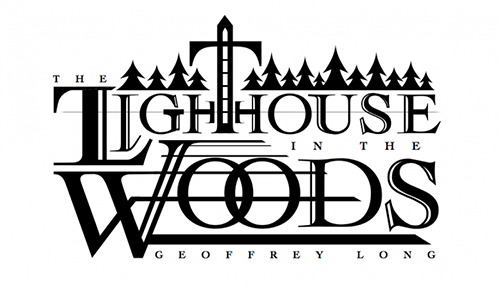 The Lighthouse in the Woods is an immersive ghost story. Donning an Oculus Rift, the user finds herself locked in a windowless study as a disembodied voice tells how, one by one, the narrator’s family fell victim to a mysterious curse. Portraits on the walls illuminate as each family member is introduced, dim as each one falls, and re-illuminate as they come back. The audience member can move around the room, but cannot leave it, and has no control over how the story progresses – replicating the narrator’s experience of impending doom and helplessness.
The Lighthouse in the Woods leverages the Rift’s unique sense of 360-degree immersion, but by removing nearly all of the audience’s agency, it subverts the assumption that the Rift is a gaming device and delivers a storytelling experience more akin to film, TV or theater. This project also explores how storytelling could evolve for a connected home. The Lighthouse in the Woods uses portraits to tell its story because connected digital picture frames are one possible additional “screen” to use in a living room.
It was a fun experiment, and it gave me an opportunity to work with some old friends (huge props to Talon Beeson, Jesica Avellone, Sara Anderson, and Andy Rozsa) and some new ones (similarly huge props to USC Games’ student Austin Drexler), but it barely scratched the surface of the topic.
Since Black Friday is this week, I’m seeing a ludicrous amount of ads for sales on smart home tech, which is probably geek dad bait of the highest order. Since we only rent our place, this particular geek dad is limited in how much I can really drill into this subject (har har), but if we did own this joint I’d first be tempted to install some of the more utilitarian stuff: a Nest thermostat and smoke detector set, for example, or some simple equipment to tell me if the mail’s arrived or if the garage door is closed. (Rose’s excellent chart aside, I suspect there’s a pretty clear Maslow’s hierarchy of needs for the Internet of Things.) However, once that was sorted, I’d definitely want more fun stuff in the house. I keep thinking about the possibilities of the house as a storytelling and entertainment platform, which leads to more thinking about how a home already functions as a storytelling engine.
Think about it:
- Framed pictures are stories. Photographs are captured memories. Paintings are captured visual stories.
- Kitchens and pantries are full of stories. Many of the recipes we cook are handed down to us over generations. The leftovers in our refrigerators are memories of places we’ve been. Many of the packages of our food tells the stories of where that food came from (true or not, that’s a different matter).
- Cars accrue memories. Not only do beautiful vintage cars have stories of prior owners, but all cars have embedded stories about how they were designed and where they were made. Dings on their bumpers tell stories of fender benders. (In my case, somewhere out there is a car with a story about backing into a piano.) Family cars could tell brilliant stories about family vacations, especially cross-country drives.
- Toys tell stories. Of course they do.
- Clothes tell stories. Much like food, many clothes have stories attached to their brands, although the actual stories of where they were made may be much less romantic. Still, shirts can be souvenirs of concerts or other locations; jewelry commemorates occasions; unique items can represent the skill and story of an artisan.
- Furniture can literally tell stories. I’ve sketched up a device I call the Storyteller’s Clock, which would rattle off a story for every day of the year…
- Lighting can tell stories. Or, at the very least, it can set the stage for other stories to emerge (hello, mood lighting).
- Architecture can tell stories. Every home has a story about who built it, when and why. The manner in which houses are designed and built reflect certain cultures or periods of time. The more artistic ones can themselves evoke particular moods or create their own little worlds (think homes that look like castles). Homes converted from other buildings, like warehouses, barns, windmills, and so on, are full of stories from their previous lives.
When you look at a home through a storyteller’s lens, you begin to realize that homes (or at least the most interesting ones) have stories everywhere. There are a couple things, though, of particular interest.
One, many of these stories are a balance of push and pull – the pictures and souvenirs in a house, for example, may be completely silent and ignored until you invoke stories when you choose to look at them – for example, many of the pins shoved into the bulletin board over my desk are souvenirs from our honeymoon at Walt Disney World, but a few are souvenirs from the opening of OSU’s Billy Ireland Cartoon Library and Museum last year, another’s from the 2010 Game Developer’s Conference, two more are from Artist’s Alley at the San Diego Comic-Con, two more are from a trip to San Francisco this year, a few are collector’s pins from the Broodhollow Kickstarter last year, one’s from a Cirque du Soleil show, one’s a rare Walt Disney Imagineering Blue Sky Cellar pin my wife got me, and another’s a rare Imagineering pin I was given as a thank-you for doing a little work for Imagineering last year. However, these items need me as a translator. When this office serves as a guest room, few people would know what the stories behind these pins are, unless I (or, in some cases, my wife Laura) were there to tell those tales. I keep thinking of the scene near the end of Return to Oz, in which Dorothy has to go through the Gnome King’s ornament room, lay her hand on an object, and say “Oz” – if the object is actually one of her friends, transformed by the villainous Gnome King into a true enchanted object, then the friend would be changed back. What if a visitor in this guest room could lay a finger on one of the pins on my bulletin board, say the equivalent of “Oz”, and hear – or somehow even see – the story behind it?
Two, I think the kitchen is actually a great place to tell stories with a smart home. Something like SARAH, the Self Actuated Residential Automated Habitat from Eureka, could sort of cook, or at the very least do an ingredient check in the pantry. We’re starting to see steps in that direction with things like Microsoft’s Kinect or Amazon’s Echo, which will clearly hook into things like Apple’s Siri or Microsoft’s Cortana really quickly. Asking a smart house to cook a meal is beyond us for the time being, but we could – and can – ask it to start the coffeemaker. However, hooking up a little screen with speakers in the kitchen that could, upon scanning a barcode or detecting some other NFC widget, play a little video of your grandmother saying where a recipe came from, or some celebrity chef explaining where the inspiration for this particular TV dinner came from, would be low-hanging fruit. There’s even a possibility of making the cooking itself into a narrative experience, either as a kind of extended metaphor a la the whole “rabbit runs around the hole” thing when you’re teaching a kid how to tie her shoes, or as a play-by-play by a really great storytelling chef like Julia Child, Anthony Bourdain or Jamie Oliver, explaining how they learned to cook this recipe.
Three, and again this gets back to my Lighthouse in the Woods prototype, I think there’s a lot of room for storytelling experiences in a smart house without screens. Imagine playing a game of hide-and-seek with a virtual cartoon mouse that scampers throughout the house via embedded speakers, “rustlers” akin to the vibrate function on a phone, or tiny projectors. Imagine a ghost story told in a similar fashion, or a romance, or a drama. Imagine an installation-style murder mystery, or something like Sleep No More or Then She Fell, the installation stories from Punchdrunk, only with the actors projected into the room? Could you tell a similar story with disembodied voices coming from location-aware speakers? What happens when you layer AR into the mix?
Four, what happens when you add performative objects, like the next generation of Teddy Ruxpin dolls, as “actors” in the experience? We’ve done a little experimenting with this at the Annenberg Innovation Lab already (more on this in a bit, once it’s fully unveiled) but imagine a whole network of smart toys that are aware of each other and react to each other, like Skylanders without a TV, built on a platform similar to the one I hypothesized over ten years ago? Imagine the Beauty and the Beast style experience you could create.
Five, what voice would you want your house to have? Getting back to the Siri and Cortana thing for a moment, would we still want our house to be an AI of sorts if we’re already carrying an AI around in our pockets? Would we want our house’s AI to be a slightly stuffy librarian, and our phone’s AI to be a wisecracking raven? Perhaps we would want multiple AIs haunting our houses, so we have a chef AI character installed in the kitchen to help with the cooking, a mechanic AI character in the garage to ask for help with the car, and a fashion designer AI in the closet to make suggestions on what to wear? What stories would they all tell? How does the modularity of separate AI characters impact how we think of them – would we feel shortchanged if we had to pony up for a separate AI for each function instead of simply buying one master house AI like J.A.R.V.I.S, or would we feel weirder if we knew our JARVIS was incomplete because we hadn’t bought the “mechanic” DLC pack to make him more useful in the garage? What if those DLC packs were themselves stories for our J.A.R.V.I.S. to learn?
Anyway, this is the kind of thing I’ve been thinking about lately. How would we Imagineer our everyday homes? What would that experience platform be like? Our houses are already full of stories, but what would you really want your house to do if you were to say aloud, “House, tell me a story”?
I just tried it. Surprisingly, I’m a little disappointed it didn’t respond. Maybe that in itself is telling me something.

November 18, 2014
2:44 pm
On October 23rd, I had the great pleasure of co-hosting Geek Speaks: The Future of Comics with Henry Jenkins.
I was thrilled to not only reunite Henry with the one and only Scott McCloud for a one-on-one discussion on McCloud’s Reinventing Comics almost 15 years later, but to then get to chair a panel of really brilliant respondents immediately afterwards.
I’ve posted a Flickr album of the event here, and you can find video of the event (although admittedly low-resolution for the time being – we’re still trying to get the high-res versions up) on the Annenberg Innovation Lab’s Vimeo page. Here’s the currently available version of Henry’s conversation with Scott:
Once they were done dazzling the audience, it was my panel’s turn. My panelists included:
Here’s the video of our half of the event:
At the heart of much of our conversation was a simple question: “What is the Future of Comics?” I didn’t get to really tuck into some of the more outlandish ideas I’ve got about where comics could be going (especially in virtual reality or augmented reality), so I’d like to republish here an excerpt from the talk I gave last year at the Grand Opening of the Billy Ireland Cartoon Library and Museum at Ohio State. This talk was presented via the gracious hosting of the good Jared Gardner, and was part of a one-two combo I delivered with my fellow transmedia geek and one time high school bandmate (how’s that for a small world?) Tyler Weaver as a setup for Henry Jenkins’ keynote lecture on “Reading the Yellow Kid”.
And now, a flashback to beautiful Columbus, Ohio on November 13, 2013 (I’ve put a Flickr album from that event here, to set the mood), and a jump-cut to the last third of my talk…
A Future of Comics, or, Ten Years of Combining Theory and Practice to Explore Transmedia Storytelling, Affordances, and the New New Comics
…Our projects at the Innovation Lab include exploring the emerging affordances of dynamic e-books, such as Moonbot, William Joyce and Brandon Oldenburg’s The Fantastic Flying Books of Mr. Morris Lessmore or Mirada and Cornelia Funke’s Mirrorworld. Because we’re a Think and Do tank, we’re applying what we’re learning from those works to our own experiments, such as the digital e-book project Flotsam, which mashed up David Wiesner’s beautiful illustrated children’s book with a rich interactive experience that utilized the iPad’s camera, its clock, and its other sensors in fascinating ways.
We’re currently booting up a new initiative at the lab we call the Edison Project, which posits that the media and entertainment industry is at its biggest point of change since Edison invented the Kinetoscope in 1891. The four primary research areas within the Edison Project are the New Creators and Makers, the New Metrics and Measurement, the New Business Models, and the New Screens – where, as the Technical Director and a media inventor style of storytelling geek myself, I’m spending most of my time.
The three big new screens we’re exploring right now are Google Glass, 3D printers, and the Oculus Rift. What’s exciting about these to me is that we don’t know what the affordances of these new screens are yet, and, I’d argue, the best way, or perhaps the most fun way, to discover those affordances is by getting our hands dirty and actually building stuff. Tinkering with Google Glass, 3d printers and the Oculus Rift will help us understand the “new new media” of augmented reality (AR) storytelling, tangible storytelling, and virtual reality (VR) storytelling, and then, for this group’s particular area of interests, perhaps even a “new comics” – AR comics, tangible comics, and VR comics.
AR Comics
Now, we’ve seen AR comics before. Marvel launched its “Marvel AR” initiative at the South by Southwest conference in 2012, and Skip Brittenham and Brian Haberlin’s gargantuan augmented reality-enhanced original graphic novel Anomaly was published in 2012 and was sufficiently well-received, or at least sufficiently conceptually impressive, to be optioned for a feature film by Relativity Media in September of 2013.
These AR experiences share a common mechanic: when a digital camera is pointed at a printed page, a lightly animated 3D model appears as if by magic, superimposed over the page. Google Glass could certainly do something similar – but there are some emerging affordances to wearable AR headsets like Glass that suggest that AR comics could offer quite a bit more.
For starters, Glass relies on a primary UI similar to a kind of “picture in picture” for the real world. The user sees a translucent screen superimposed over the upper right corner of their vision, which the user then swipes through left and right using a touchpad on the frame beside their right eye. Seeing this in action, the temptation to experiment with panel-by-panel comic strips, perhaps with its advancement triggered by a simple blink, is irresistible.
That’s interesting, but let’s go more blue-sky. As the technology advances to overlay more than just one corner of your vision, and as computer vision tech advances for more nuanced recognition of patterns in the real world, it’s possible to imagine a system that composites comic book panels over white spaces in the real world. Sitting in a hotel, an advanced set of AR glasses could overlay panels of a story reshaped dynamically in a way similar to what we did with Ryse, cropping and zooming large panels into dynamic sizes customized for your walls – which will, of course, call into question how “fixed” or dynamic the layout and composition of these images could be to have them still be considered comics.
Either way, what’s funny is that, even if we don’t yet know the full affordances of storytelling with a “new screen” like Google Glass, such explorations of what it means to tell stories, or to make comics, using such new screens helps us to fill in those gaps, to figure out what those affordances of this new medium might be. Again, learning through getting excited and making things.
Tangible Comics
The term “tangible comics” is admittedly idiotic, because traditional paper comics are already tangible. However, in this case we’re inheriting the term from the concept of tangible computing, or, as it’s more popularly known, the “Internet of Things.”
Much of the buzz surrounding this emerging tangible computing space is focused on the 3D printing movement, and rightly so. Early experiments bashing together 3D printing and comics are really interesting – for example, Wizards and Robots from Intel’s resident futurist Brian David Johnson and the Black Eyed Peas’ resident futurist will.i.am includes such transmedia extensions as multiple print artifacts delivered encased in a 3D-printed “crystalline” container.
Perhaps more interesting, at least to me, are the possibilities offered here to update the same “toys + comics” area that I covered in my aforementioned application essay to MIT. This bundling of comics with toys is being currently revisited by Hasbro’s Transformers toys, some of which now include full-sized issues of IDW’s Transformers comics which, much like Mattel and DC’s Masters of the Universe mini-comics from the 1980s, each offer up a story starring its co-packaged action figure.
Where this gets interesting is where we look at the emerging practice of 3D printing really detailed, beautiful custom action figures. As 3D printers continue to increase in their fidelity, and inevitably begin printing in multiple colors with multiple materials and textures, it’s only a matter of time before, instead of toys coming bundled with comics, we’re buying comics that are bundled with exclusive downloadable toys that we’ll print at home.
Again, these are still early days, but tinkering in these directions will begin to help us understand an emergent set of leverage-able affordances for tangible storytelling.
VR Comics
Not a lot of people are experimenting with comics and virtual reality yet – Google “comics AND Oculus Rift” and you get a strip by Scott Johnson about a poor guy joyfully immersed in a VR game while a villain lifts his wallet.
Perhaps this is because, much like “tangible comics”, the idea of VR comics seems antithetical to comics at all. For a clue as to how this might work, consider the approach one Korean company took in developing an app called VR Cinema 3D, which is pretty much exactly what it sounds like – a virtual reality cinema, in which the user can watch regular movies, but without the pesky kids on their dratted cell phones.
That said, simply holding up a virtual comic page in virtual reality is, well, virtually useless. So push it further – what if each panel of a comic could be fully immersive, so the user could choose to step through the frame and wander around each panel in 3D space, so each panel becomes effectively a life-sized, enormous virtual diorama? If that diorama is static and doesn’t use spoken text, but instead employs giant floating 3D text balloons, could they still be recognizable as comics?
Again, it is through such experimentation, such critical making, that we will come to understand what virtual reality will have to offer us as storytellers.
The Next Transmedia Comics
What’s especially interesting here is that this last scenario, as weird as it sounds, isn’t that farfetched. Imagine the next generation of transmedia artists, who don’t want to tell transmedia stories using just comics or games or videos, but also AR, tangible artifacts and VR?
It’s now becoming possible to boot up transmedia mini-production studios. Much like how Adobe’s Photoshop became rapidly repurposed from a photo editing tool into the de facto Swiss army knife of multimedia design, Unity is becoming a de facto Swiss army knife for next-generation transmedia experiences. Art created in programs like Photoshop and Autodesk’s Maya can be imported into Unity, and then exported out into games, videos, virtual reality environments like those used by the Oculus Rift, and even 3D printable toys and artifacts. Within the next 5 years or so, this kind of transmedia production studio may well become the new desktop publishing, and ‘indie’ transmedia stories could become much, much more expansive.
Conclusions and Takeaways
So what’s next? Long story short, right now at the Innovation Lab we’re looking to:
- Explore these new screens
- Discover their new affordances
- Observe what new story experiences emerge
- Prototype, prototype, prototype!
In other words, to get excited and make things! Thank you!

|


